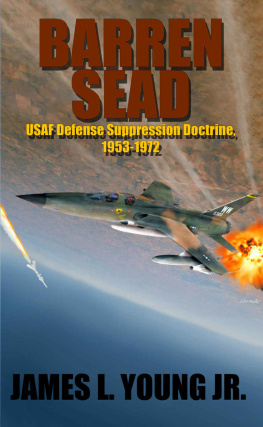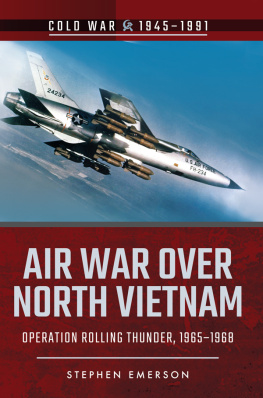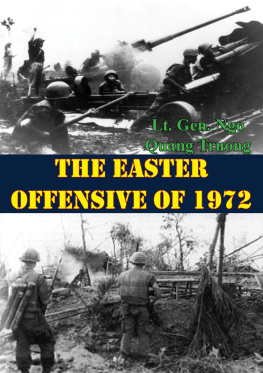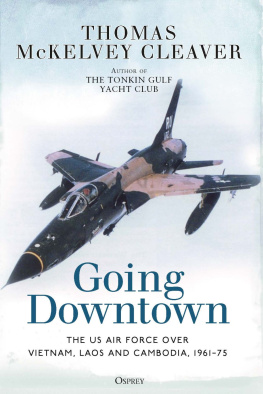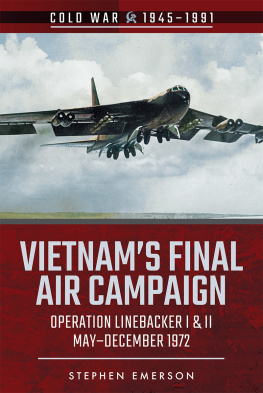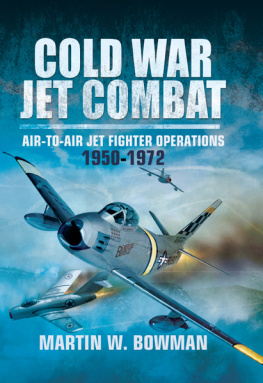No individual, regardless of how gifted theyare, concludes a project such as this without help. Rather than namingevery individual who helped make this project a reality, I will simply say ahumble and gracious thank you to the dozens of people who aided me in waysgreat and small.
1 A VERY UNHAPPY EASTER
On March 30, 1972 the DemocraticRepublic of Vietnam (DRV) launched a conventional assault, dubbed the EasterOffensive, against South Vietnam. For the first time, the NorthVietnamese Army (NVA) eschewed its traditional guerilla and light-infantryoriented tactics in favor of a mechanized, multi-divisional attack against theRepublic of South Vietnam. Dubbed the Easter Offensive by theAmericans, the assault was intended to simultaneously shatter the Army of theRepublic of Vietnam (ARVN), occupy South Vietnams regional capitals and,through these two events, destabilize the South Vietnamese government. Inresponse to this act President Richard Nixon ordered the United States AirForce and Navy to resume bombing North Vietnam.
For the next nine months, USAFconducted offensive operations against the whole of the DRV in an attemptto accomplish four major objectives. First, USAF sought to sufficientlyinterdict the North Vietnamese Armys (NVAs) supply lines in order to precludecontinued conventional operations in South Vietnam. Second, PresidentNixon had directed the Air Force to inflict sufficient punishment on NorthVietnam that the DRV Politburo was deterred from authorizing further aggressionagainst South Vietnam. Third, as implied by the Nixon Doctrine, USAF wasto establish convincingly its ability to conduct conventional operations insupport of an allied nation during a major conflict. Finally, with the introductionof B-52 bombers in December 1972, the Air Force was to maintain the credibilityof manned strategic aircraft as part of American nuclear deterrence policy.
Since the conclusion of OperationLinebacker II, various U.S. government agencies, and civilian defense observeshave all maintained that the United States Air Force succeeded in all fourtasks. For instance, the Smithsonian Institutions To Hanoi and Backstates that air operations against Hanoi were an obvious success.
Given these views, each of whichwas adapted after careful, thorough research, it is easy to see why it hasbecome an article of faith with many U.S. Air Force officers that in 1972 USAFand USN aircraft had pummeled the NVA spearhead in the field, shattered theNorth Vietnamese supply net, then bludgeoned and dragged a recalcitrant NorthVietnam back to the peace table only to have civilians give away a hard foughtvictory. Unfortunately, this view isincorrect. Instead of a smashing victory, the United States Air Forceonly managed to interdict the NVAs supply lines, with the majority of thisobjective achieved through the the tactical application of airpower in SouthVietnam.
Instead of a victory, the 1972operations against North Vietnam (heretofore referred to as LinebackerOperations) were actually a major defeat for the United States Air Force. Over nine months, the USAF was unable to demonstrate convincing conventionalcapability, punish the North Vietnamese to deter future attacks against SouthVietnam, or demonstrate that its manned bombers were still viable strategicweapons systems. As with Operation Rolling Thunder, these shortcomingsdid not stem from civilian interference, but the Air Forces decision not todevelop an adequate Suppression of Enemy Air Defense (SEAD) doctrine from 1968through 1972. The evidence presented in the following pages will clearlyillustrate that the Air Forces civilian and military leaders made decisions inthis area which lead directly to USAF possessing obsolescent equipment andlacking operational guidance when offensive operations resumed against NorthVietnam in 1972. As a result, it was clear to impartial observers thatUSAF could not penetrate an integrated air defense system (IADS) by the end ofLinebacker operations. This outcome had serious implications for theUnited States conventional and nuclear military policy for the remainder ofthe Cold War.
Defining SEAD
Before proceeding, it is firstnecessary to define exactly what is meant by Suppression of Enemy Air Defensedoctrine as many services, nations, and references describe SEADdifferently. To illustrate this point, consider that Edward Luttwak andStuart Koehls The Dictionary of Modern War defined SEAD in 1991 as aU.S. term for weapons, tactics, and operations whose aim is to destroy orotherwise neutralize anti-aircraft guns and surface to air missiles in order toallow attack aircraft to operate more freely. Although at first readingthis may appear to be a small change in wording, in military terms the seconddefinition greatly expanded the number of systems, activities, and operationsthat could be included in SEAD operations.
In general, military historians andanalysts have followed the thrust of Luttwak and Koehls definition whenexamining the history of SEAD even if national militaries have not. Forexample, Anthony Thornborough and Frank Mormillos Iron Hand: Smashing theEnemys Air Defenses focuses on attacks against surface-to-air missile(SAM) and gun sites during Vietnam while excluding any information on effortsto destroy the NVAFs interceptors.
Artificially limiting SEADsdefinition to merely those efforts undertaken against SAMs and AAA sites isproblematic given USAF doctrine of the time period in question. Instead,the following pages will establish a new paradigm for discussing SEAD in sixways. First, this book define SEAD as actions taken to degrade, destroy,or neutralize one or multiple aspects of an air defense system, to includeenemy fighters. Second, rather than considering SEAD solely atactical mission, the subsequent pages will focus on its application as anoperational task as well. Next, by treating the North Vietnamese defensesas an integrated whole, Barren SEAD will provide evidence that therewere critical nodes whose destruction would have unraveled the entireNV-IADS. Tying into this, this work will illustrate that the UnitedStates Air Force was incapable of detecting, identifying, and destroying thesenodes from 1965 through 1968. Fifth, it will show that it was thisweakness, not civilian interference, that that led to the extraordinary lossesof Operation Rolling Thunder. Sixth, it will present evidence that showsthe Air Forces leaders, rather than drawing on these experiences, instead madean informed decision not to change the USAFs SEAD doctrine from1968-1972. Finally, I will outline how this unwillingness to changeresulted in the Air Forces defeat during the Linebacker Operations in 1972.
2 THE IMPORTANCE OF DOCTRINE
As with SEAD, there are numerousopinions on what exactly what doctrine encompasses. For example, TheDictionary of Modern War states that doctrine consists of [o]fficiallyenunciated principles meant to guide the employment of military forces underspecified conditions. Forpurposes of clarity, when referring to doctrine from this point forward thereader should combine these definitions to consider the word synonymous with

